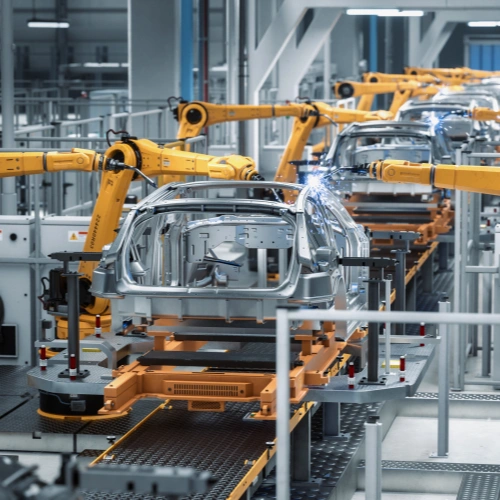1. The Growing Demand for Stainless Steel in New Energy Vehicles
The growing adoption of NEVs is closely linked to the increasing demand for sustainable and high-performance materials. As governments around the world tighten regulations on emissions and fuel efficiency, automakers are turning to electric and hybrid vehicles as a cleaner alternative. This shift is creating a rising need for materials that can withstand the unique challenges posed by electric powertrains and energy-efficient designs.
Stainless steel stands out in this regard. Its unique combination of properties—such as resistance to corrosion, high strength-to-weight ratio, and durability—makes it an ideal material for NEVs. Stainless steel is used in a variety of components, from structural parts to more specialized applications, offering a balance of performance and cost-effectiveness that is crucial in the mass production of NEVs. The demand for stainless steel in the automotive sector is expected to continue growing as the production of NEVs scales up.
2. Key Applications of Stainless Steel in New Energy Vehicles
Stainless steel plays a pivotal role in various parts of NEVs. Below are some of the most critical applications:
Battery Enclosures: One of the most significant uses of stainless steel in electric vehicles (EVs) is in the construction of battery enclosures. Stainless steel is used because of its excellent corrosion resistance and its ability to provide robust protection to the battery, which is crucial for the vehicle's overall safety. Given the high energy density of EV batteries, stainless steel's durability ensures the batteries are safely housed under challenging operating conditions.
Structural Components: Stainless steel is also utilized in the frame and bodywork of NEVs. Its strength and resistance to wear and tear make it an ideal choice for structural components that need to endure both stress and environmental exposure. These properties are particularly important in electric vehicles, where vehicle weight and structural integrity are key considerations.
Heat Exchangers and Cooling Systems: Stainless steel’s ability to resist heat and corrosion makes it an excellent choice for components that manage the thermal needs of NEVs, such as heat exchangers and cooling systems. These systems are essential for maintaining optimal battery temperature and preventing overheating, which can degrade performance or pose safety risks.
Exhaust Systems (for Hybrid Vehicles): While electric vehicles are free from exhaust systems, hybrid vehicles still require them. Stainless steel remains the material of choice for exhaust systems due to its resistance to high temperatures and corrosion, especially in hybrid systems that combine internal combustion engines with electric motors.
3. Technological Innovations in Stainless Steel for NEVs
The role of stainless steel in NEVs is evolving thanks to several technological advancements. Manufacturers are exploring new alloys and production techniques to further enhance the material's performance.
Advanced Alloys: New stainless steel alloys designed specifically for NEV applications offer improved strength, reduced weight, and better resistance to corrosion. These alloys are particularly useful in the production of lightweight but durable parts, helping to reduce the overall weight of vehicles—a key consideration for EVs, where every kilogram saved translates into improved energy efficiency and driving range.
Corrosion Resistance and Sustainability: As NEVs are exposed to more diverse environmental conditions, corrosion resistance becomes even more critical. Innovations in stainless steel coatings and treatments are enhancing the material’s longevity, ensuring it performs reliably over the life of the vehicle, even in harsh climates or after prolonged exposure to moisture or road salts.
3D Printing and Additive Manufacturing: Another exciting development is the use of stainless steel in 3D printing, or additive manufacturing. This technique allows for the creation of custom, complex components that are lighter and more precise. In the context of NEVs, 3D-printed stainless steel parts can optimize vehicle performance, reduce waste in production, and enable rapid prototyping for new designs.
4. Environmental Impact and Sustainability
The growing focus on sustainability is one of the key drivers behind the increased use of stainless steel in NEVs. Stainless steel is inherently recyclable, making it an environmentally friendly material. Unlike many other metals, stainless steel can be recycled without losing its strength or quality, which reduces the need for raw material extraction and lowers the carbon footprint of manufacturing processes.
In addition, many manufacturers are adopting greener practices in stainless steel production. Advanced technologies are being introduced to reduce the energy intensity of the steel-making process, and more sustainable raw materials are being used. These efforts contribute to the overall sustainability of NEVs, helping the automotive industry meet stricter environmental regulations while reducing its impact on the planet.
Moreover, the high recyclability of stainless steel ensures that NEVs have a lower end-of-life environmental impact compared to vehicles made with less sustainable materials. This aligns with the broader goals of the NEV sector, which aims to reduce emissions not only during the operational phase of vehicles but also throughout their lifecycle.
In conclusion, stainless steel is playing an increasingly important role in the development of new energy vehicles. From structural components to specialized parts like battery enclosures and cooling systems, its unique combination of strength, durability, and recyclability makes it an ideal choice for NEV manufacturers. As technological innovations continue to enhance its properties, stainless steel will remain at the forefront of the push towards more sustainable and efficient vehicles. While challenges such as supply chain issues and cost considerations persist, the future of stainless steel in the automotive industry looks bright, with continued advancements ensuring its role in the evolution of new energy vehicles.
